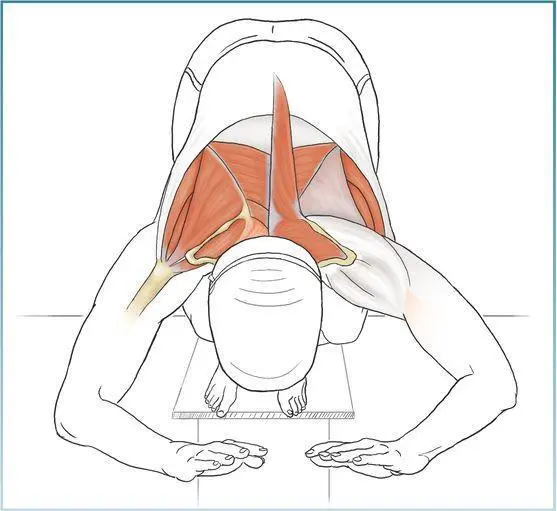
VARIATION
Physioball T, Y, A
Although adding a physioball makes the exercise much more challenging, it more closely mimics the demands encountered while swimming. As in the water, holding the body in a straight line from the feet all the way to the top of the head is important.
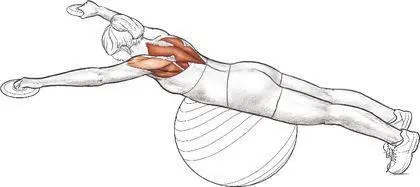
Scapular Push-Up


Execution
1. Facedown, support your body weight on your toes and forearms.
2. Holding your body in a straight line, lower your chest while maintaining the shoulder position and allowing your shoulder blades to pinch together.
3. By rolling your shoulders (protraction), push your upper body upward.
Muscles Involved
Primary:Serratus anterior
Secondary:Pectoralis minor
Swimming Focus
The sole target of this exercise is a muscle called the serratus anterior, which is important in keeping your shoulder blade tight against your back. Weakness of this muscle will lead to “winging” of the shoulder blade, a sign that the shoulder blade is not being properly controlled, which in turn increases the risk of shoulder injury. The serratus anterior is also important in rotating the shoulder blade upward when moving overhead, which helps to extend the stroke.
The purpose of performing this exercise from the forearms instead of the hands is to isolate the movements to the shoulder region.
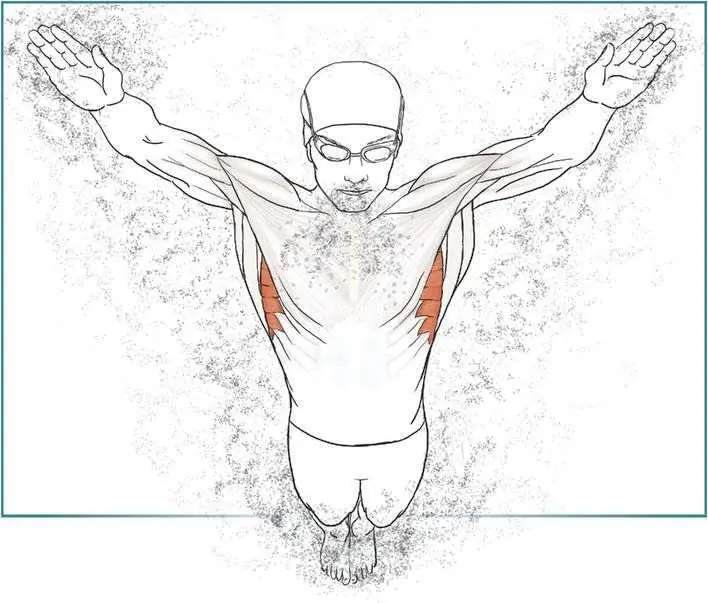
Winging of the shoulder blade.
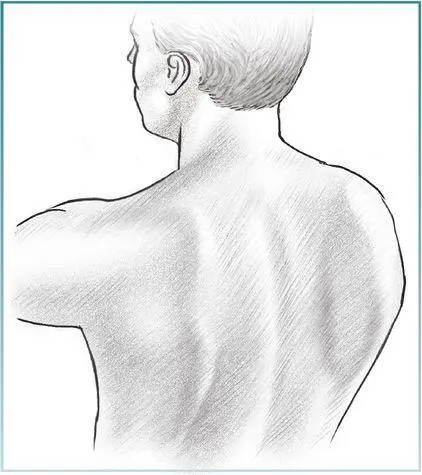
Scapular Dip

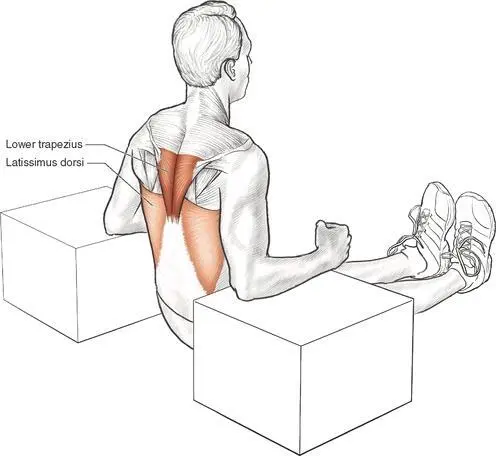
Execution
1. Sitting upright between two 6-inch (15 cm) boxes, position your hands so that they are in line with your torso. Your elbows should be flexed to 90 degrees, which will allow you to rest your forearms on the box.
2. Pushing down, lift your butt off the ground, emphasizing a reverse shrug of your shoulders.
3. Lower back down until you barely touch the ground and repeat.
Muscles Involved
Primary:Lower trapezius
Secondary:Pectoralis major, pectoralis minor, latissimus dorsi
Swimming Focus
This exercise helps to increase the stability of the shoulder joint and to correct postural changes frequently seen in swimmers. It targets the lower fibers of the trapezius, where weakness can lead to shoulder injuries. Strengthening of the lower fibers of the trapezius also helps to correct the forward rounded-shoulder posture common to swimmers.

Internal Rotation With Tubing

Anterior deltoid _______
Pectoralis major _______
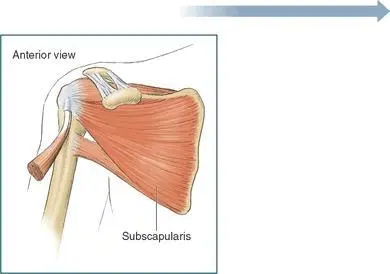
Execution
1. Stand sideways 4 feet (120 cm) from a pole with a piece of exercise tubing attached at elbow height. Hold the end of the tubing with the arm closer to it and bend the elbow to 90 degrees.
2. Rotate your hand across the front of your body until it contacts your torso. Keep your forearm parallel to the floor during the entire movement.
3. Slowly return to the starting position.
Muscles Involved
Primary:Subscapularis
Secondary:Pectoralis major, latissimus dorsi, anterior deltoid
Swimming Focus
The subscapularis is one of the four rotator cuff muscles, a muscle group that is important in stabilizing the shoulder joint during repetitive upper-extremity exercises; hence, exercises that target the subscapularis play a vital role in injury prevention. Remember that the rotator cuff muscles all arise from the shoulder blade, so when performing this exercise you should stabilize the shoulder blade by pinching it down and back and holding that position during the exercise. Placing a towel between your elbow and the side of your body as shown helps decrease tension on some key muscles and serves as a reminder to keep the elbow tight against your side as you rotate your arm.
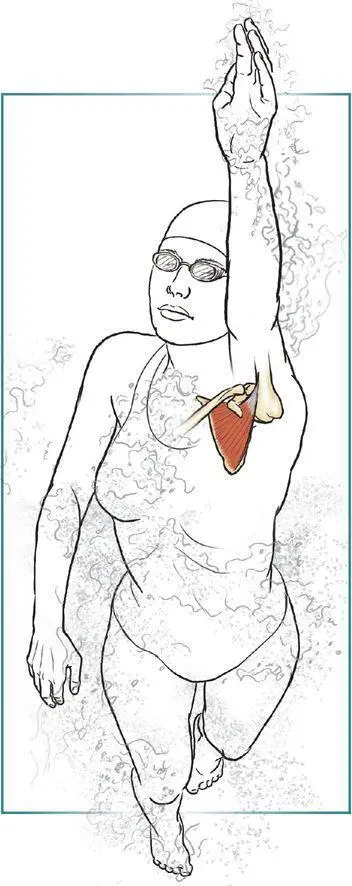
External Rotation With Tubing


Execution
1. Stand sideways 4 feet (120 cm) from a pole with a piece of exercise tubing attached at elbow height. Hold the tubing in the hand farther from the pole and bend the elbow to 90 degrees.
2. Rotate your hand away from your torso until you have covered a 90-degree arc. Keep your forearm parallel to the floor during the entire movement.
3. Slowly return to the starting position.
Muscles Involved
Primary:Infraspinatus, teres minor
Secondary:Posterior deltoid
Swimming Focus
External rotation isolates the infraspinatus and teres minor, two components of the rotator cuff muscle group. These muscles are important in stabilizing the shoulder joint during repetitive upper-extremity exercises. Because all the strokes except backstroke emphasize internal rotation movements at the shoulder, adding this exercise to address the strength imbalance is important.
Remember that the rotator cuff muscles all arise from the shoulder blade, so you must stabilize the shoulder blade when performing this exercise. Pinch your shoulder blade down and back and hold that position during the exercise. Placing a towel between your elbow and the side of your body as shown helps decrease tension on some key muscles and reminds you to keep your elbow tight against your side as you rotate your arm.
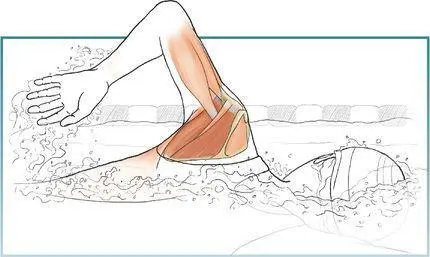
VARIATIONS
Side-Lying Dumbbell External Rotation
Читать дальше


























